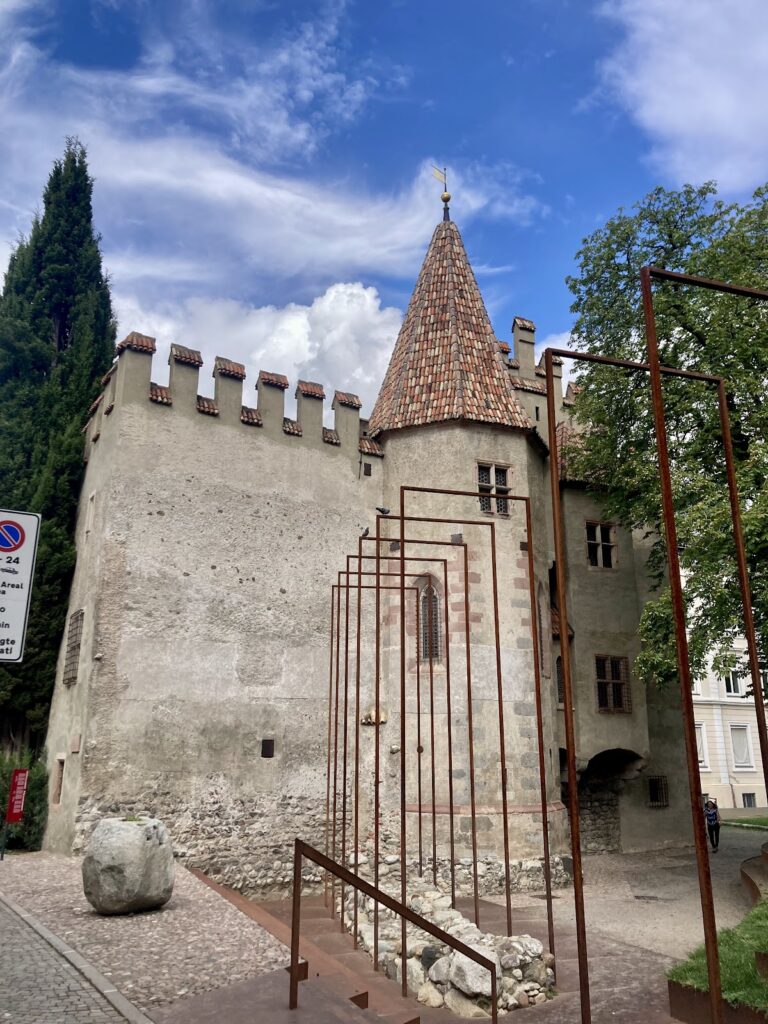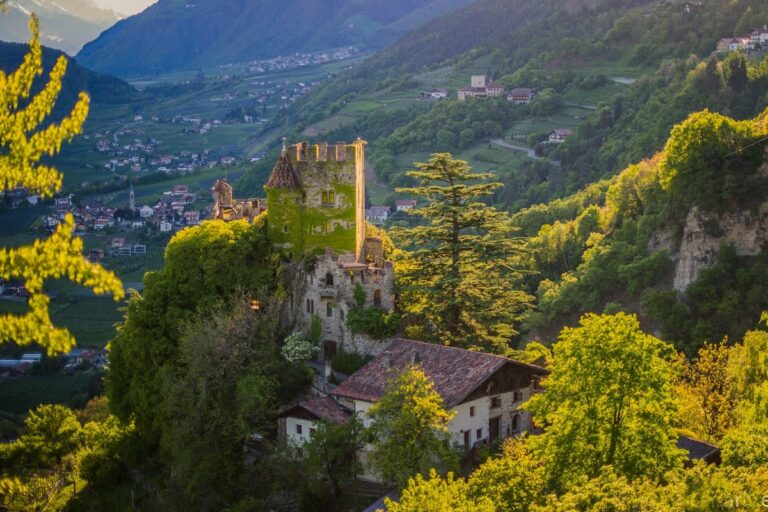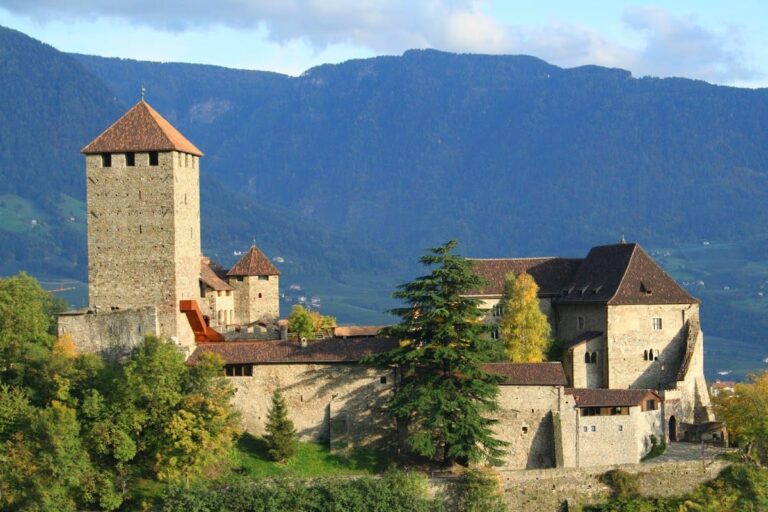Castle Pienzenau: A Historic Estate in Merano, Italy
Visitor Information
Google Rating: 4.6
Popularity: Low
Google Maps: View on Google Maps
Official Website: www.pienzenau.com
Country: Italy
Civilization: Unclassified
Remains: Military
History
Castle Pienzenau is situated in the municipality of Merano, in modern-day Italy. Its origins trace back to the late 14th century when it was first recorded as a rural estate owned by the noble couple Klara and Ulrich von Pienzenau.
In the 16th century, the property changed hands to Georg Büchler von Weidenegg. By the late 18th century, specifically 1779, the estate came under the possession of the Benedictine monks from Ettal Abbey in Bavaria. During this period, the monks transformed the estate into a prebendal holding—a form of property providing income for clergy—and a tranquil retreat for rest and spiritual reflection. The monks developed extensive vineyards on the grounds, producing both red wine and wine used for religious ceremonies, supplying their monastic communities. A small roadside chapel with a devotional niche built into the west wall remains from this time and continues to be owned by Ettal Abbey as an independent enclave.
Around the mid-19th century, during the reign of Emperor Franz Joseph, secularization laws led to the sale of many church properties including this estate. It then passed through various owners such as Johann Prunner, Josef von Trauttmannsdorff-Weinsberg, and Reichsritter Moritz von Leon. The latter began remodeling the farmhouse into a residence resembling a castle, initiating significant architectural changes.
In 1884, Eugen von Popoff, recognized as a pioneer in fruit cultivation, purchased the estate. He enhanced its castle-like character by adding battlements and renovating the castle’s interior spaces. Between approximately 1870 and 1900, the castle and nearby holdings served as imperial residences during visits to the region by Empress Elisabeth of Austria, known as Sissi. During this era, local newspapers variously described the property as a farmstead, villa, manor, castle, or fortress, with the designation “Schloss,” German for castle, becoming standard usage by 1889.
Later ownership included Paul Kuh-Chrobak, who was known to host notable guests such as the composer Richard Strauss. In 1969, the Schölzhorn family acquired the estate, overseeing extensive renovations. Today, Castle Pienzenau retains its historical layering, serving as a venue for hospitality and events while preserving its rich heritage.
Remains
The estate of Castle Pienzenau occupies several hectares within Merano’s Obermais district, reflecting centuries of evolving use and landscaping. A key feature of the site is the large park developed under the guidance of the Benedictine monks, who employed a Spanish botanist and garden designer to create it. This garden contains an assortment of Mediterranean plants and trees, including hemp palms, monkey puzzle trees, cypresses, cedars, araucaria, and bamboo, chains of greenery that reflect both the monks’ horticultural interests and the region’s climate.
Among the historically significant structures on the grounds is a small roadside chapel attached to the west boundary of the property. This chapel includes a devotional niche and remains under the ownership of Ettal Abbey as an exclave, maintaining a direct spiritual link to the estate’s monastic past.
The castle itself underwent marked architectural transformations in the late 19th century under Eugen von Popoff’s ownership. It acquired battlements, known in German as zinnen, which gave its roofline a fortified appearance reminiscent of medieval castles. Internally, the castle was refurbished, though details of the layout or decorative elements remain unrecorded. Presently, these interior spaces have been further adapted for contemporary hospitality use, hosting a public bistro and various events.
Together, the castle buildings and expansive park represent the layered history of Castle Pienzenau, showcasing adaptations that range from monastic agricultural estate to aristocratic residence and modern cultural venue, while retaining key elements that highlight its long-standing landscape and architectural heritage.










